MUSHROOMS
|
I
wish I could provide you with the botanical names for all the species
of mushrooms in this selection from my photographic mushroom collection,
but I can't for two reasons. The first reason is that I don't know
them all, and the second reason is that mycologists have been busy
reclassifying fungi and changing names since my once-excellent reference
books were written. I try to keep up to date on lots of things, but
mushroom nomenclature is not at the top of my list. So, if you're
"in the know," please forgive any naming error. |
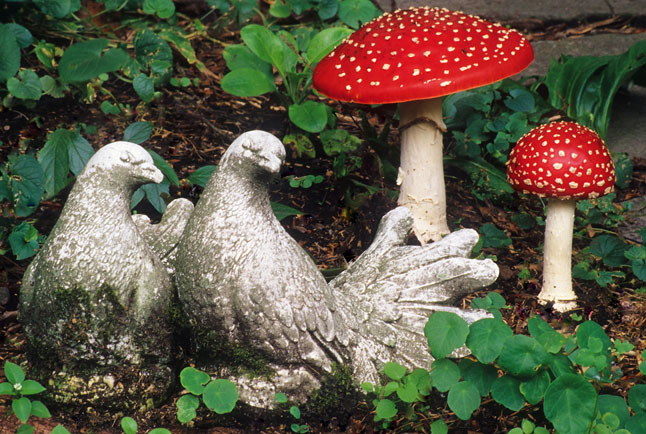
Amanita muscaria in the backyard of a friend, Christchurch, New Zealand. |
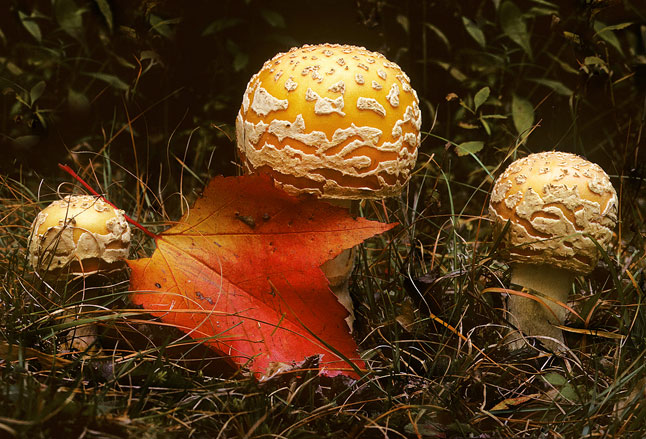
Amanita
muscaria in mid-October, southern Ontario. |
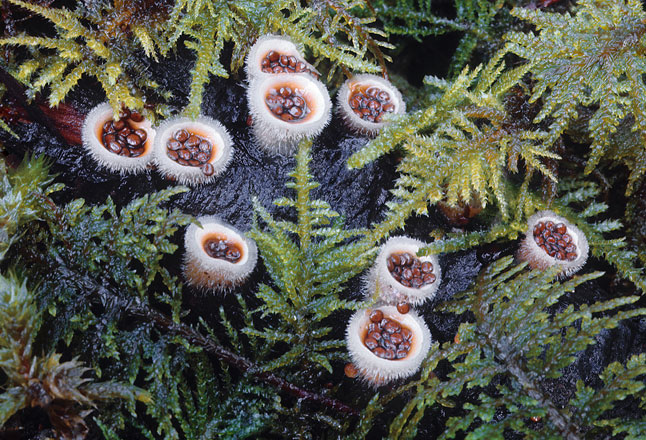
Raindrops
that fall into the cup of a bird’s nest fungus knock the "eggs" or spore cases out of the cup, which shatters the egg and disperses the spores. |
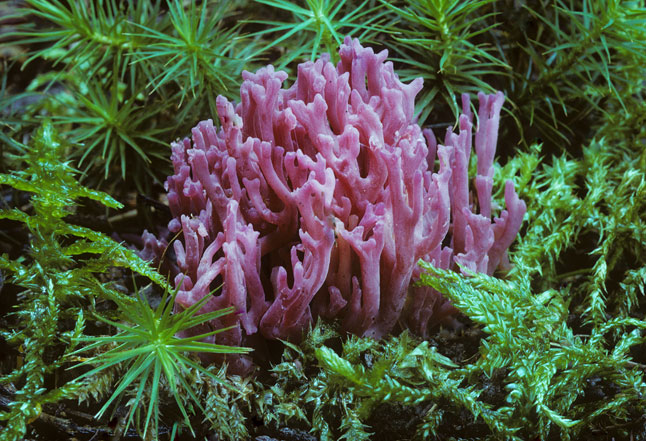
Clavulina cinerea, though mycologists may have decided the name needed changing. |
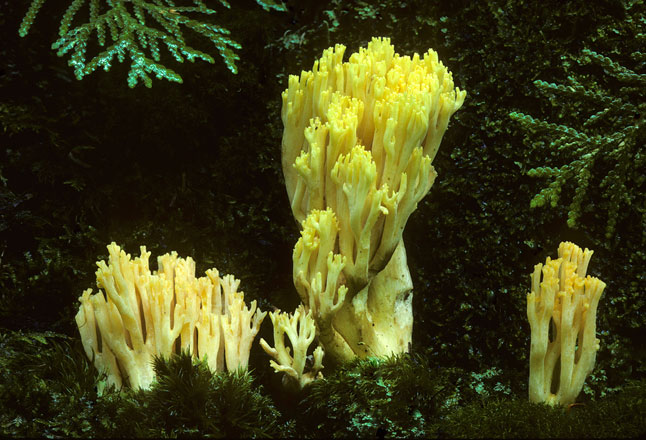
This Clavaria pyxidata looks like a cousin of the previous mushroom. |
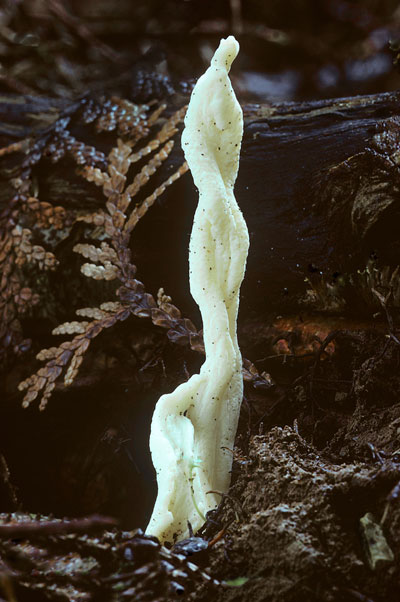
One of the "Earth tongue" fungi. (Note the absence of a cap.) |
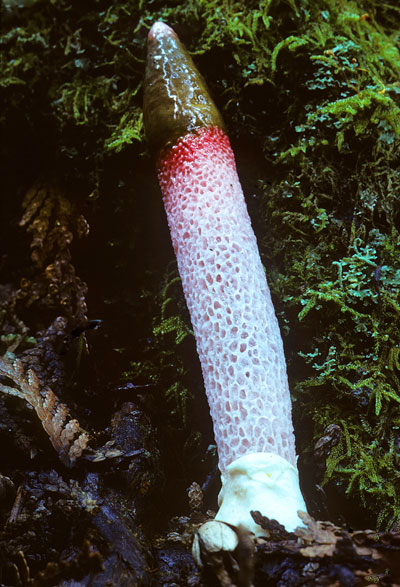
One
of the "stinkhorn" mushrooms (Caninus mutinus) that well deserves its
name. The greenish-brown slime at the top is the source of the stench. |
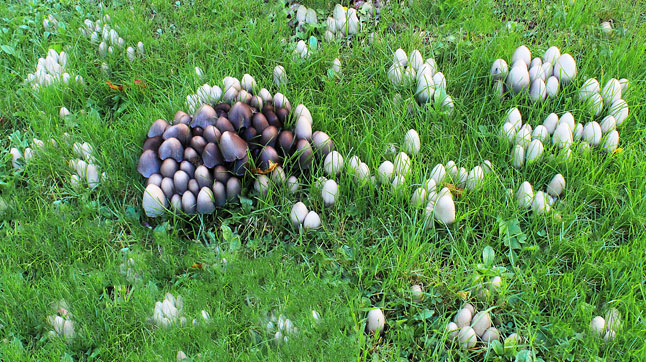
Coprinus mushrooms growing on a garden path. |
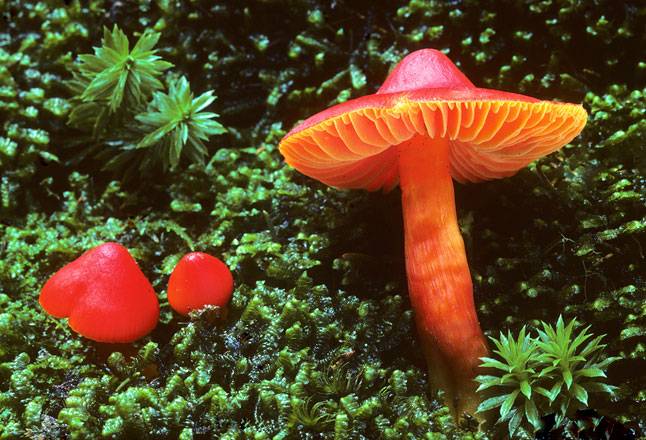
A
two-minute time exposure made with film in deep forest, bounce light
provided by kitchen foil. This was the cover image for the fourth edition of my book Photography of Natural Things. |
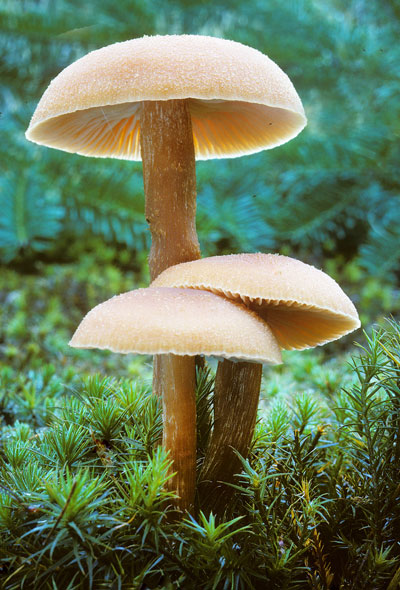
Laccaria laccata in prime condition at Shamper’s Bluff. |
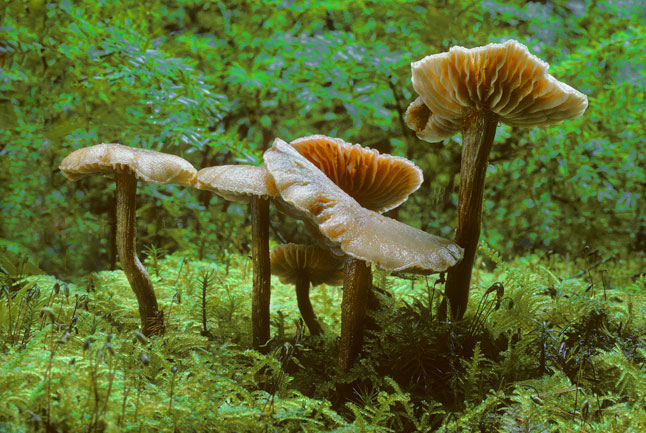
More mature Laccaria laccata mushrooms near Qualicum Falls, British Columbia.
|
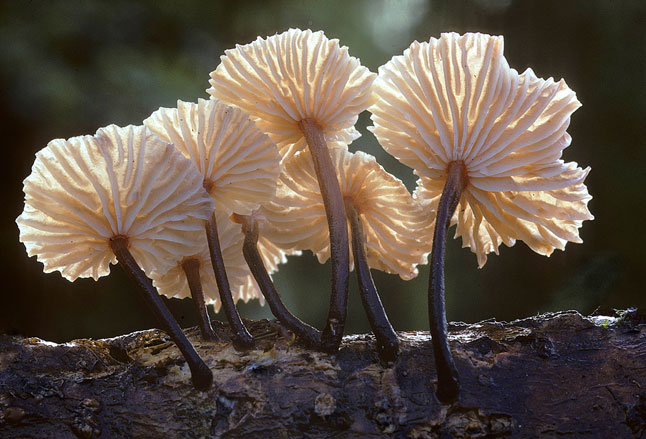
A species of Marasmius helping a fallen tree to decay. |
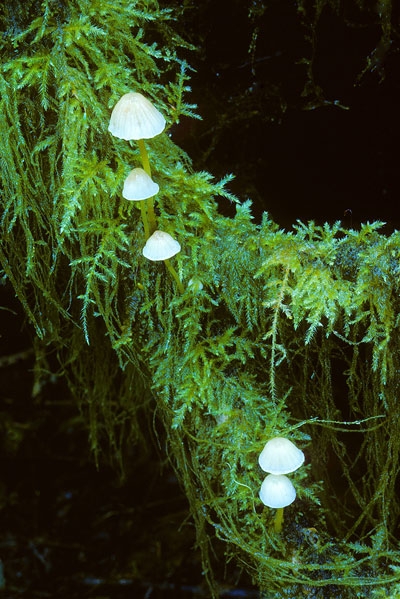
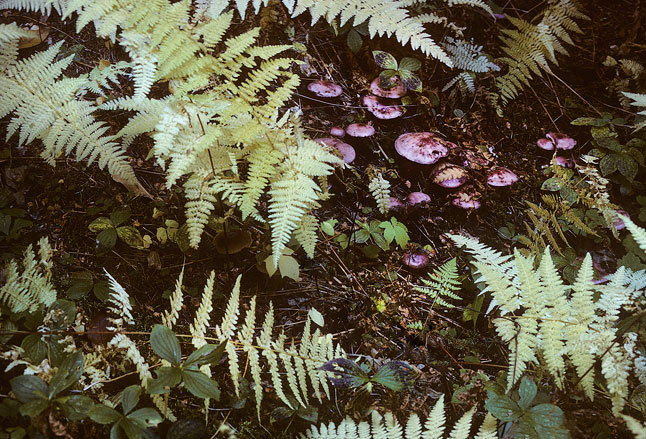
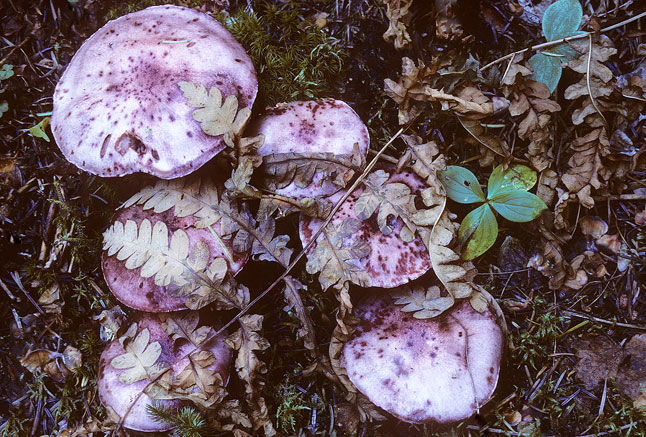
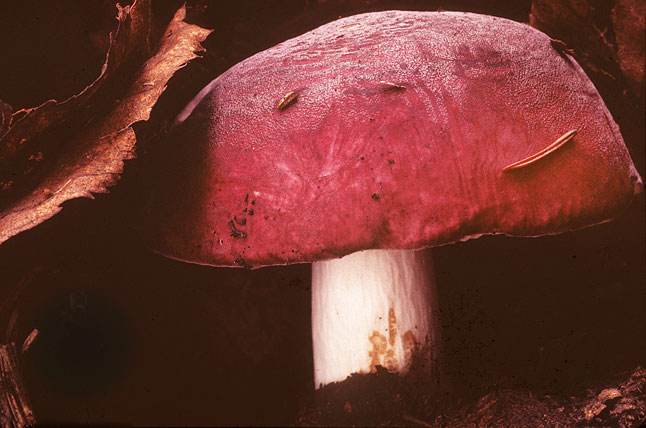
Russula sp. |
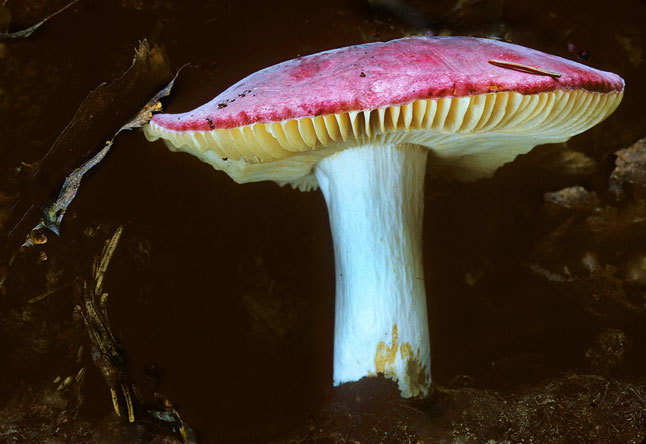
Russula sp. – same mushroom, next day. |
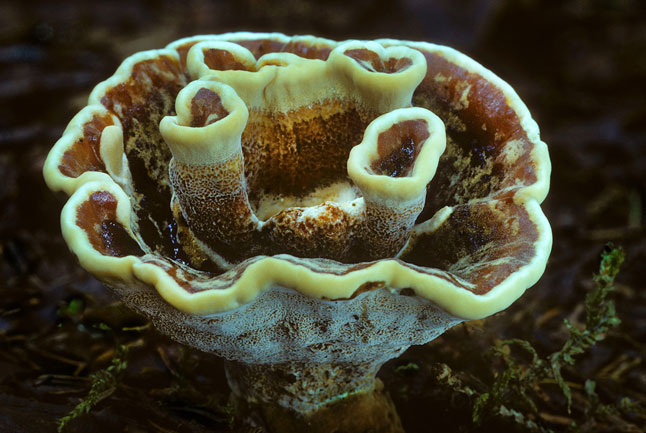
A mushroom only its mother could love. |
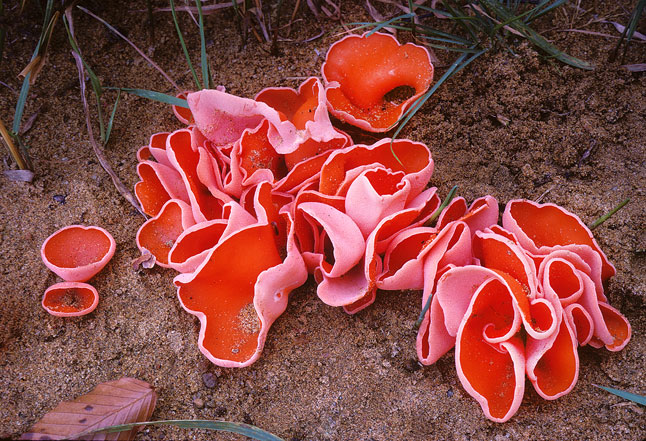
Sarcoscypha coccinea gracing a sandy spot south of Goderich, Ontario. |
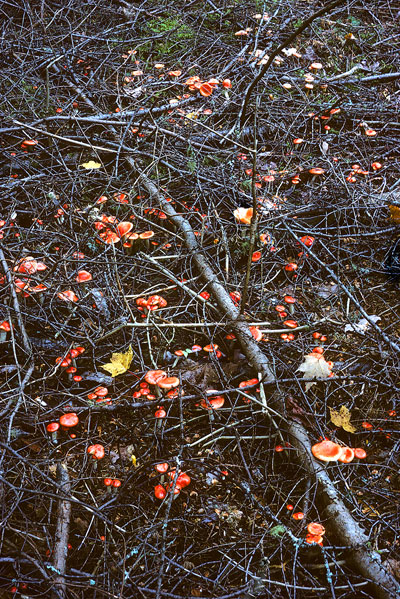
Plant material transitioning to humus with fungi playing a major role.
|
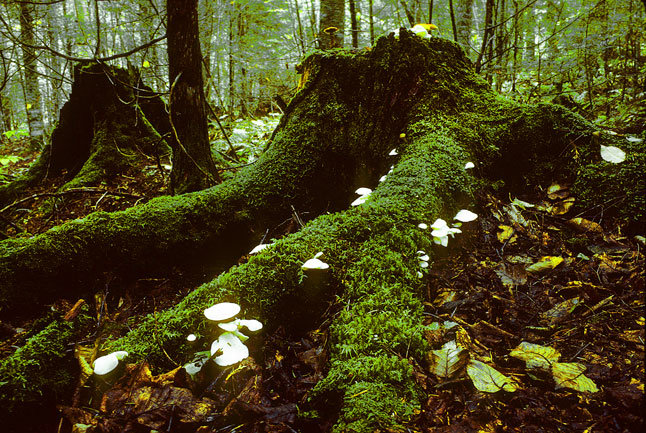
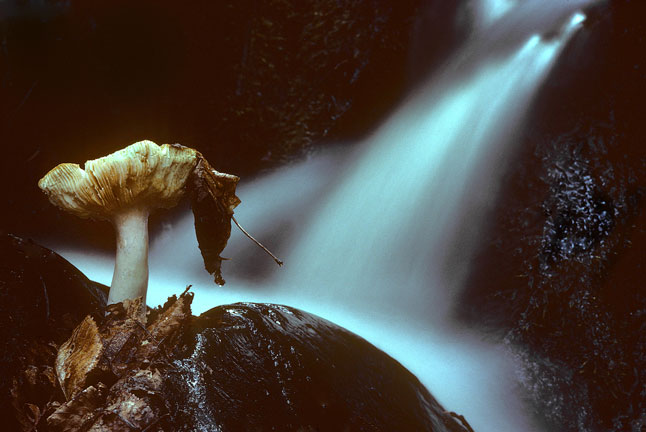
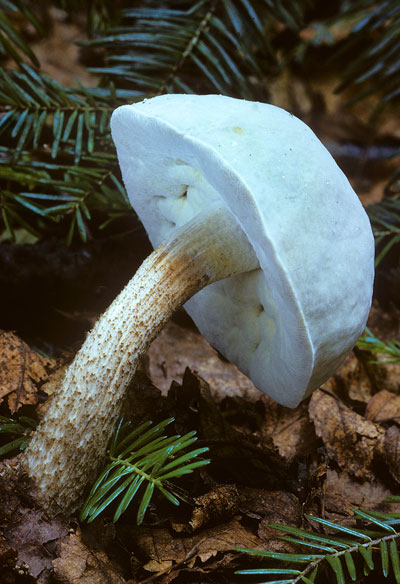
A member of the Boletaceae (no gills;) probably Boletus pallidus. |
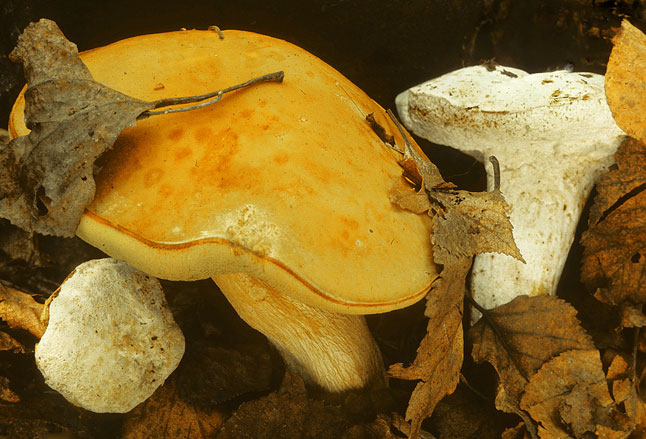
More Boletaceae |
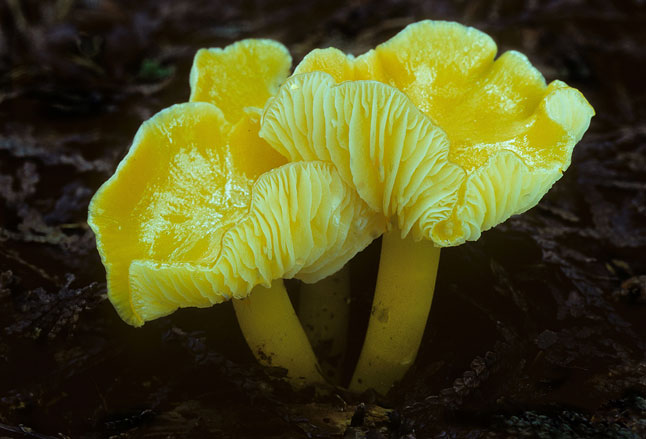
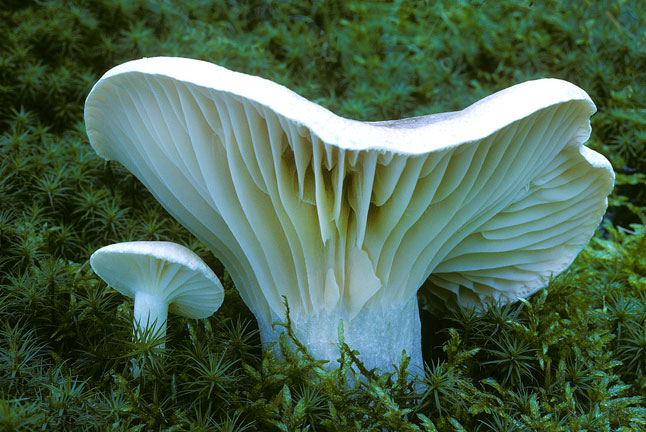
Hygrophorus sp. |
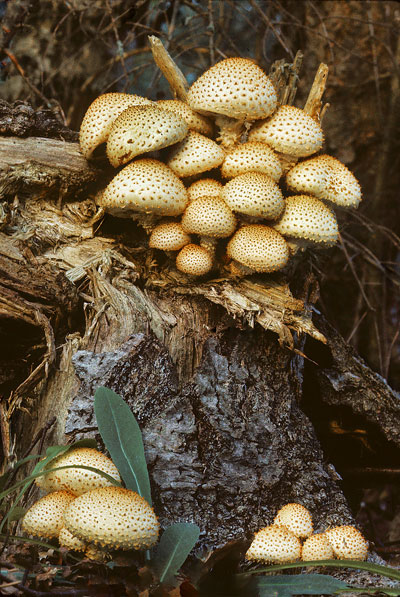
Clumps of Pholiota mushrooms on rotting stump. |
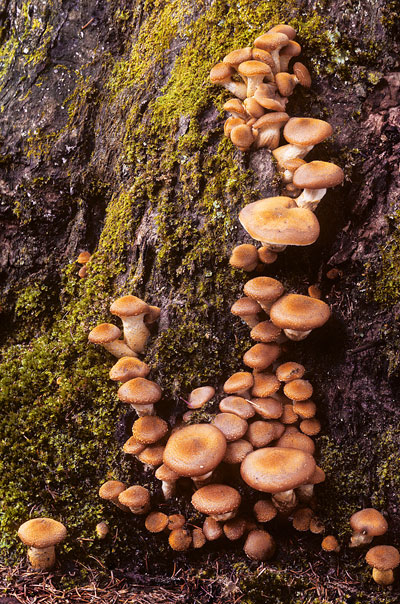
Another stump, another species. |

One of the Lycoperdon species (puffballs); edible when young. |
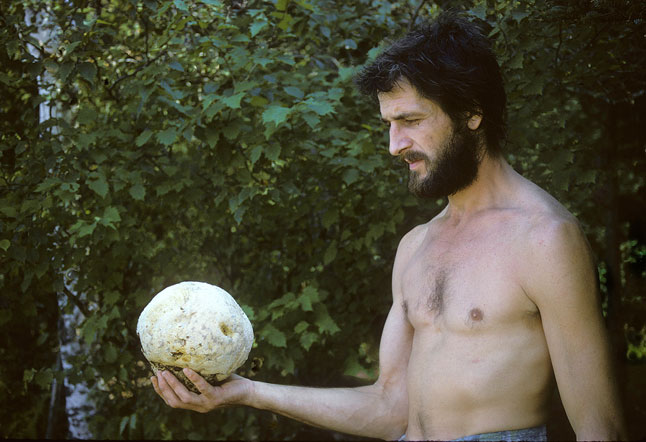
The giant puffball, Calvatia gigantea, is edible and choice – slice into cubes for a cheese fondu. |
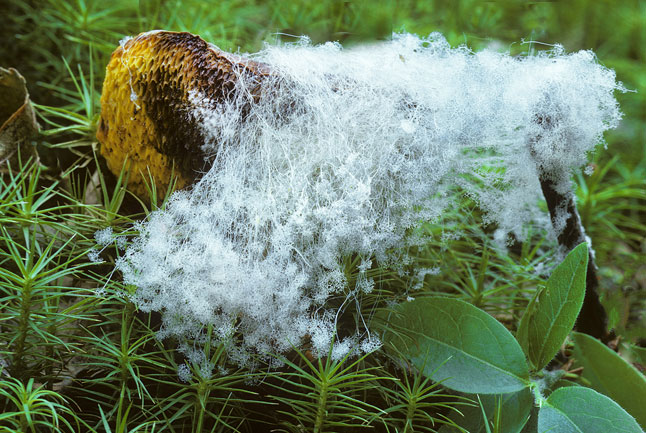
Fungus on fungus. |

Albert Einstein |
![]()
Images and Photographs © 2019 Freeman Patterson - All Rights Reserved.